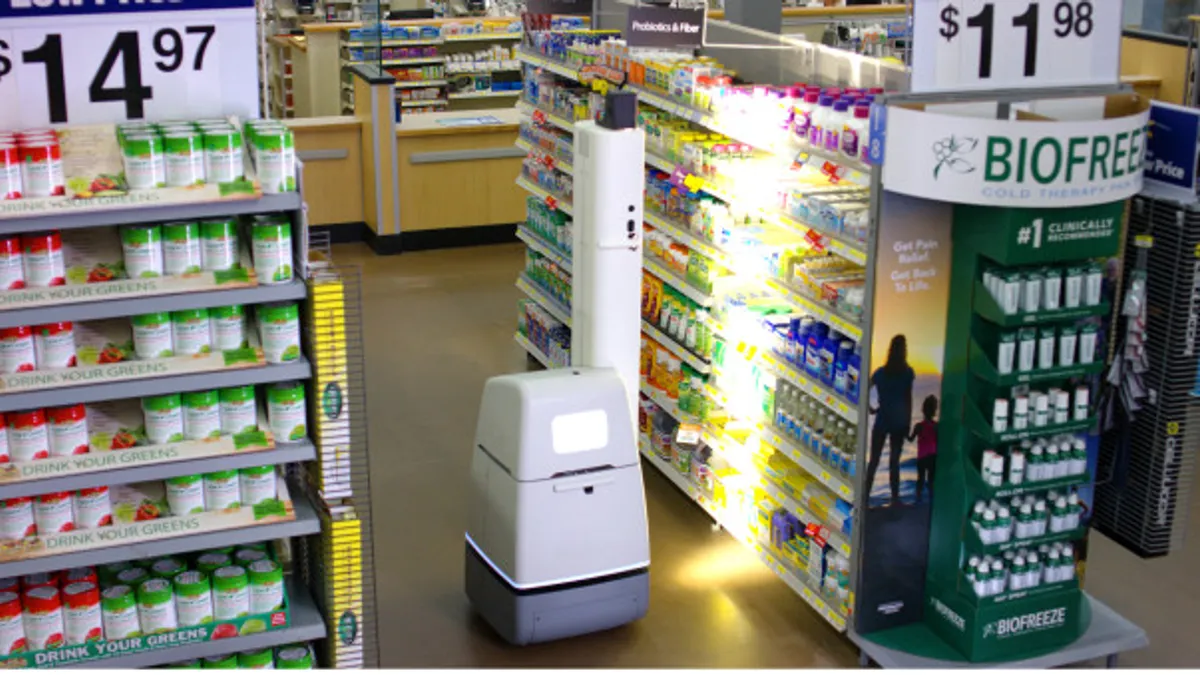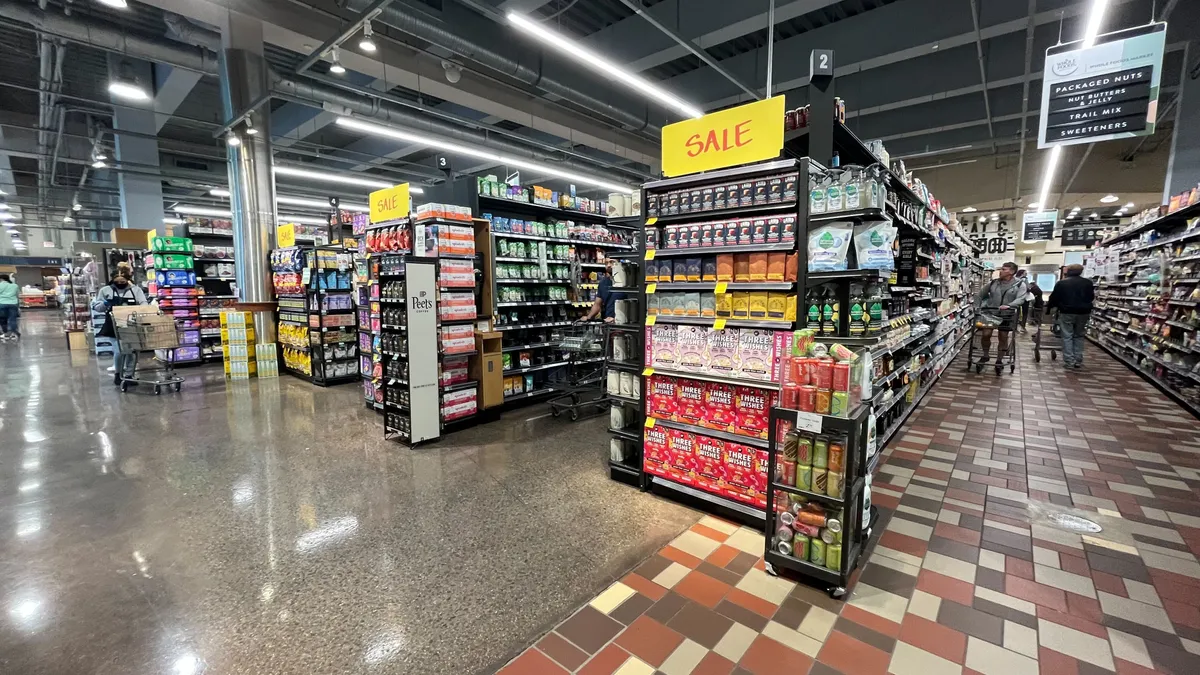Dive Brief:
- Lenta, a supermarket operator based in Moscow, has introduced seven so-called “promobots” in stores around the city, according to The Mirror.
- The robots can offer information on store promotions, demonstrate new products and greet regular customers thanks to facial recognition software.
- “We can confidently say that this is the largest implementation of autonomous service robots in retail, at the moment,” Lenta’s director of development, Oleg Kivokurtsev, told The Mirror.
Dive Insight:
Robots wandering store aisles might sound a bit out there, but this technology has already begun showing up in grocery locations across the U.S.
This summer, Midwestern grocer Schnucks began testing a three-foot tall robot named Tally that glides up and down aisles checking prices and inventory levels. A few months later, Ahold Delhaize-owned Giant introduced customers to a robot named Marty. Like Tally, it too wanders through aisles checking prices and inventory levels, and also searching for hazards like wet floors. Its distinguishing feature is a pair of googly eyes.
The biggest test of in-store robots is happening at Walmart, where last month the company began trialing shelf-scanning robots in 50 stores.
The major difference between these bots and the ones introduced by Lenta is that they’re not engineered to interact with customers. Tally and Marty, despite their whimsical names, are made for repetitive work that is very important and also very prone to human error. This seems to be the only capacity in which these retailers are willing to employ robots. As Walmart noted in a promotional video announcing its new bots:
“We’re using technology to focus on tasks that are repeatable, predictable and manual, freeing up associates to spend more time doing what they do best: serving you.”
Indeed, with Amazon Go nearing opening and more retailers relying on automation in their supply chains, there’s growing discussion about labor replacement in the retail industry. But companies have made it clear, at least to this point, that most customer-facing service jobs are best left to human workers.
Outside of their employees, retailers prefer to utilize their websites and mobile apps, which are much more cost-effective ways of interfacing with shoppers. So while chatty robots wandering the aisles might sound fun to consumers, they’re not likely to show up in U.S. stores anytime soon.










